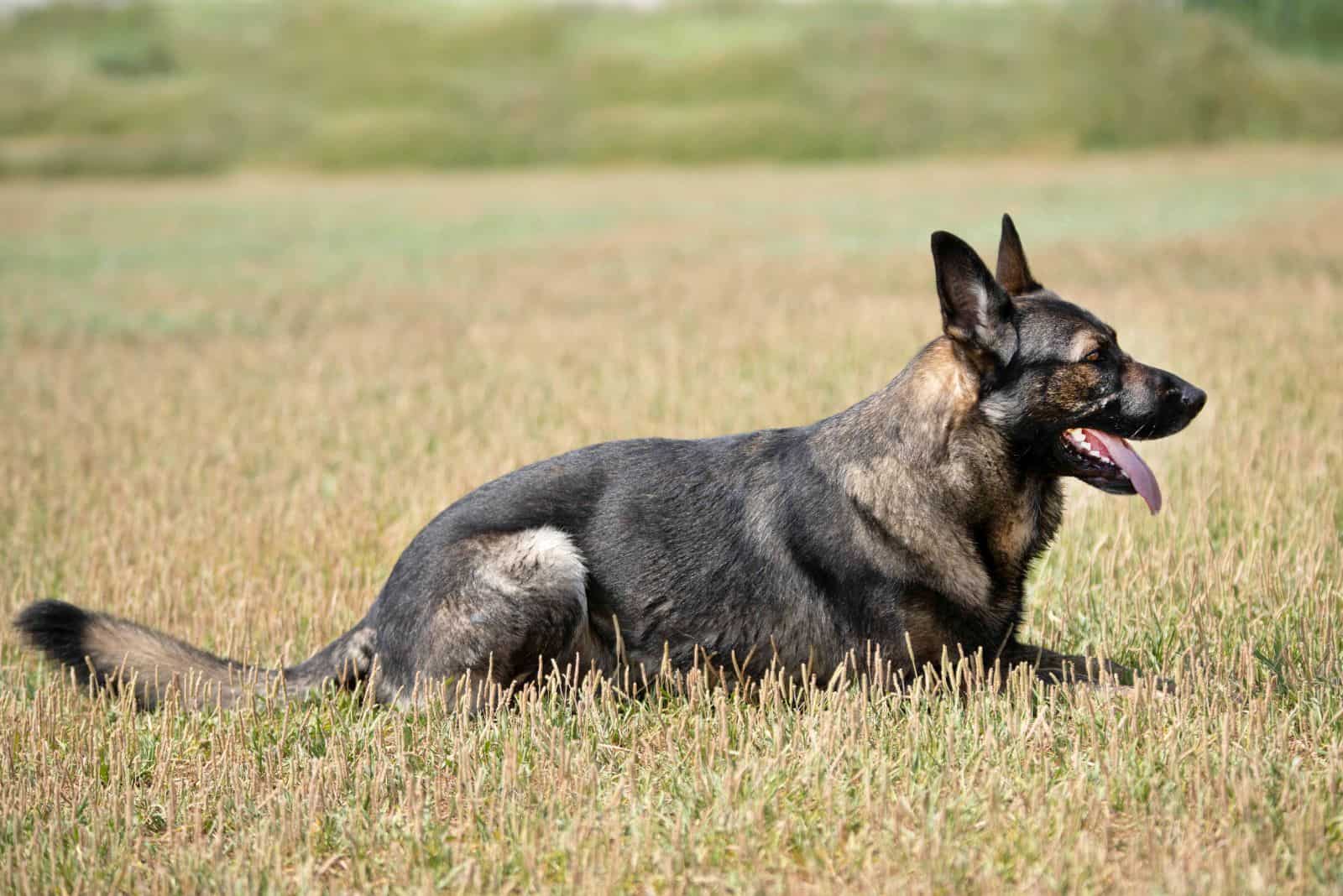Ladies and gentlemen, may I present you his highness – the grey German Shepherd! Not so often do you have the chance to come across this gorgeous, unusual black-and-white variant of a GSD puppy.
This is due to the fact that gray German Shepherds are much rarer than their black-and-cream, sable, liver, or black-and-red counterparts.
This relatively new breed, though, still has all the characteristics of a full-blooded GSD puppy. Given that gray is the AKC-recognized color in GSD puppies, you should not worry about this dog’s bloodline.
Still, if you’re inclined to buy a full-blooded, grey German Shepherd, you should do so only from reputable breeders.
And, now… let’s cut to the chase! Here is some basic information every grey GSD enthusiast should know. Let’s begin!
What Is A Grey German Shepherd?
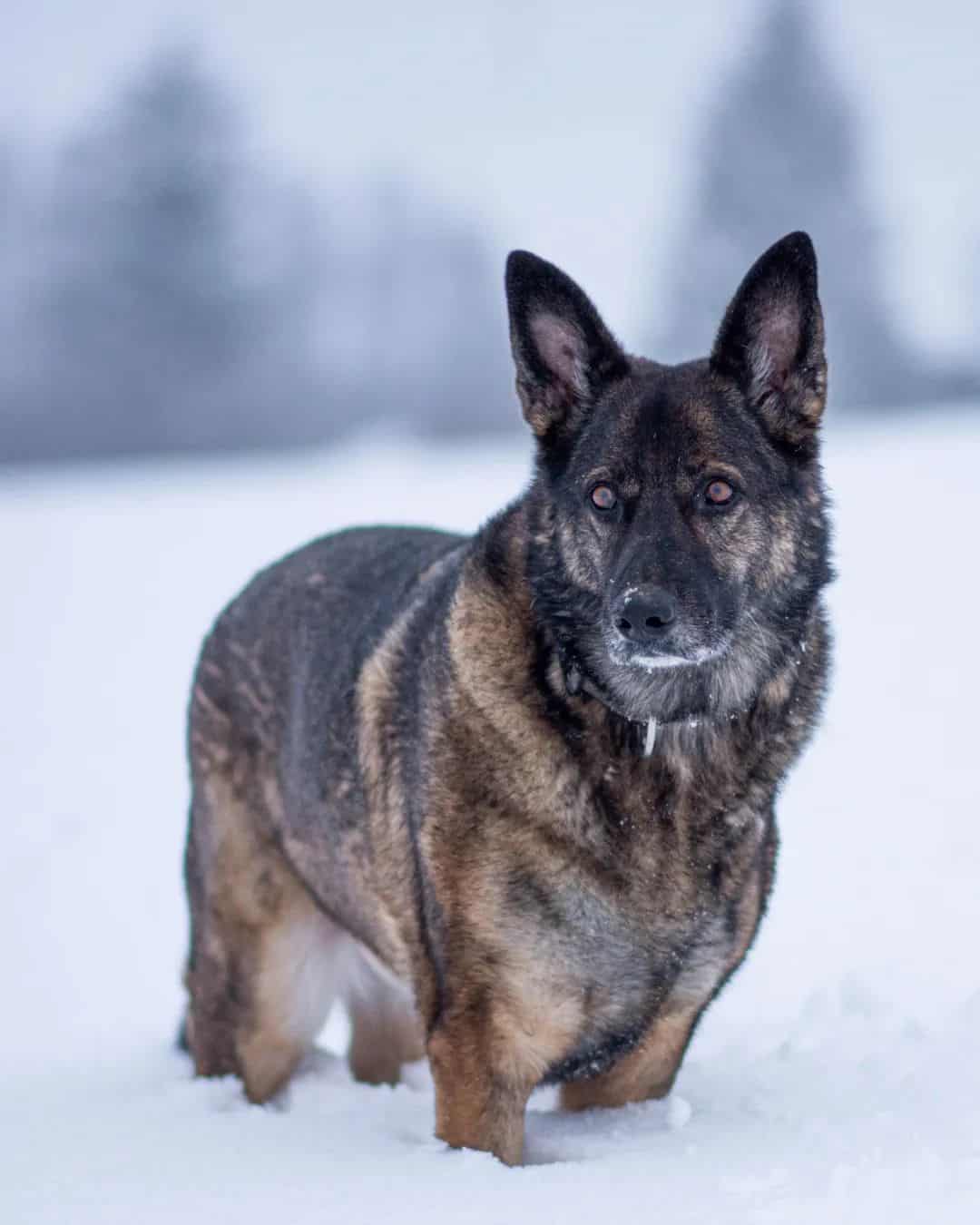
To put it simply – a grey German Shepherd is still a purebred, full-blooded GSD with a lighter version of coat. According to some breeders, grey (or silver) coloring in these pooches is caused by a genetic deficiency of red pigmentation in their coat.
Some even consider that this pigmentation is not real, but deceptional. Namely, some of these dogs have alternating bands of cream pigmentation mixed with the white or black one, which makes them appear grey.
There is a third option, though, and you’re not going to like it! Some of these purebred pooches are grey due to crossbreeding. That’s right! There are still some breeders who sell their designer GSD mixes under purebreds.
Origin
It was Max Von Stephanitz who bred the first, original Deutshe Schäferhund (German Shepherd dog). It was the 1800s when this cavalry officer intended to breed the perfect herding dog. Consequently, the GSD was born.
To this day, these pooches are known to be excellent herders. As time went by, many saw other potentials in this impeccable German pooch.
Its exquisite intelligence and a great working potential were used in military, police, and service facilities. This way, the GSD puppy became a great officer, law-enforcer, soldier, and rescue dog.
The breed was first introduced in the United States in the 1900s. It was in 1908 when the American Kennel Club recognized this breed as independent.
Nowadays, GSDs are known to be among the greatest family dogs primarily, but then again, they are widely-known police dogs, military dogs, and service dogs.
Physical Appearance
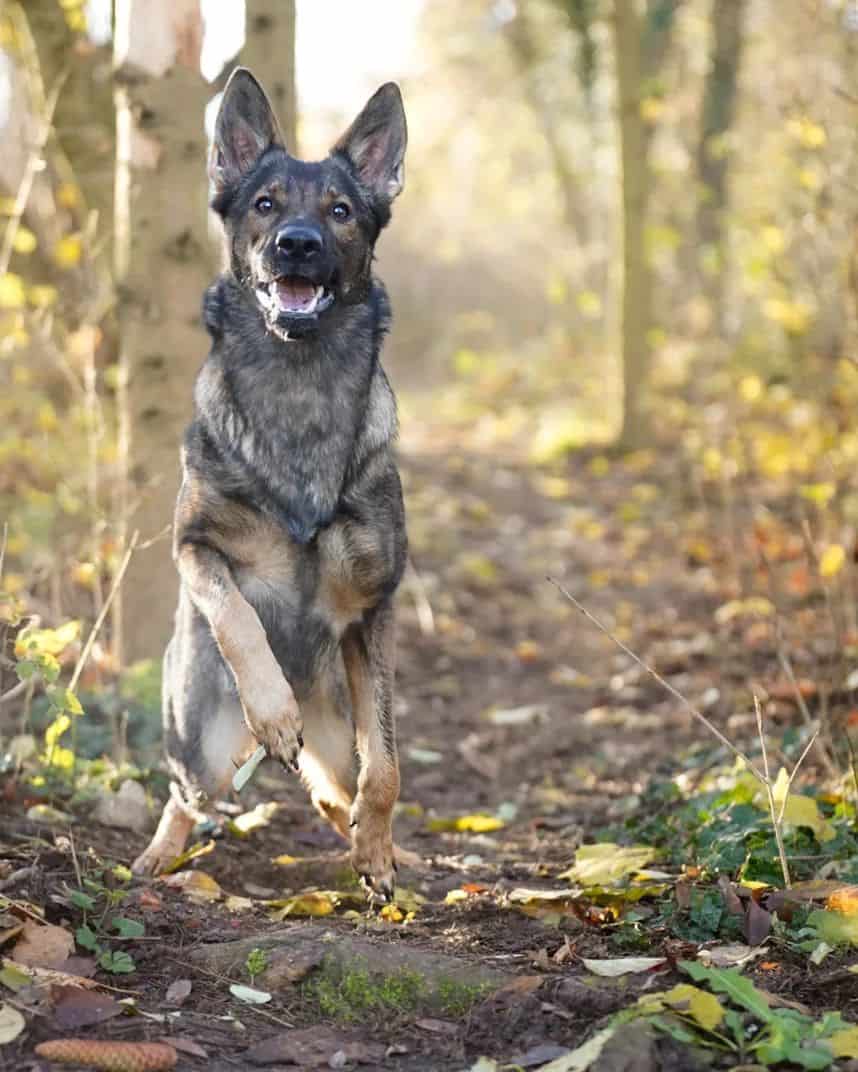
Both male and female GSDs are extremely athletic, durable dogs, with an excellent body physique. That being said, these medium to large dogs are perfect for sporting families and people who love spending their free time outdoors.
Despite their grey coloration, these pooches still have a double coat that sheds moderately. On the other hand, they require weekly brushing to remain shiny and neat.
All grey GSDs have long, erect ears, and a black muzzle. Even though they don’t appear as muscular as other watchdogs, such as Rotties and Pits – these pooches are extremely strong.
In fact, GSD puppies have a much greater potential than the majority of dogs whose main purpose is to watch, guard, and work. That being said, these canines require at least one to two hours of high-intensity exercise during the day.
Anything less than that can lead to destructive behavior, obesity, and other health problems.
Size
A standard, male grey GSD stands between 24 and 26 inches at the shoulders. Females are slightly shorter than males, as their average height revolves around 22 to 24 inches.
Males weigh between 65 and 90 pounds, while females reach up to 70 pounds maximum.
According to their growth chart, both males and females are dogs that qualify among medium to large dog breeds. That being said, these pooches require high-quality foods that are served once (or twice) in their adulthood stage.
On the other hand, their daily exercise requirements should not be neglected, as untrained and unexercised GSDs can be extremely aggressive and self-destructive.
Coat Type
Grey German Shepherds have a medium-long, double coat that sheds frequently. Even though they are considered as moderate shedders, these pooches shed excessively during the seasons, and moderately to excessively in the off seasons.
Either way, they require careful attention when it comes to grooming, as these pooches leave their hair trails everywhere. A nice, once- or twice-a-week brushing is highly recommended to all GSD owners, as well as an occasional bath.
Crate training your grey companion will save you a lot of time and money cleaning its hair, as crate-trained puppies have only one sleeping place. The rest of them simply love crawling up on your bed or hiding under your bed sheets.
Besides grey, there are some other GSD color variants that are worth mentioning. The famous black-and-cream is number one. Others that follow are liver, white, black, sable, blue, and black-and-tan. Needless to say – all of these colors are AKC recognized!
Temperament
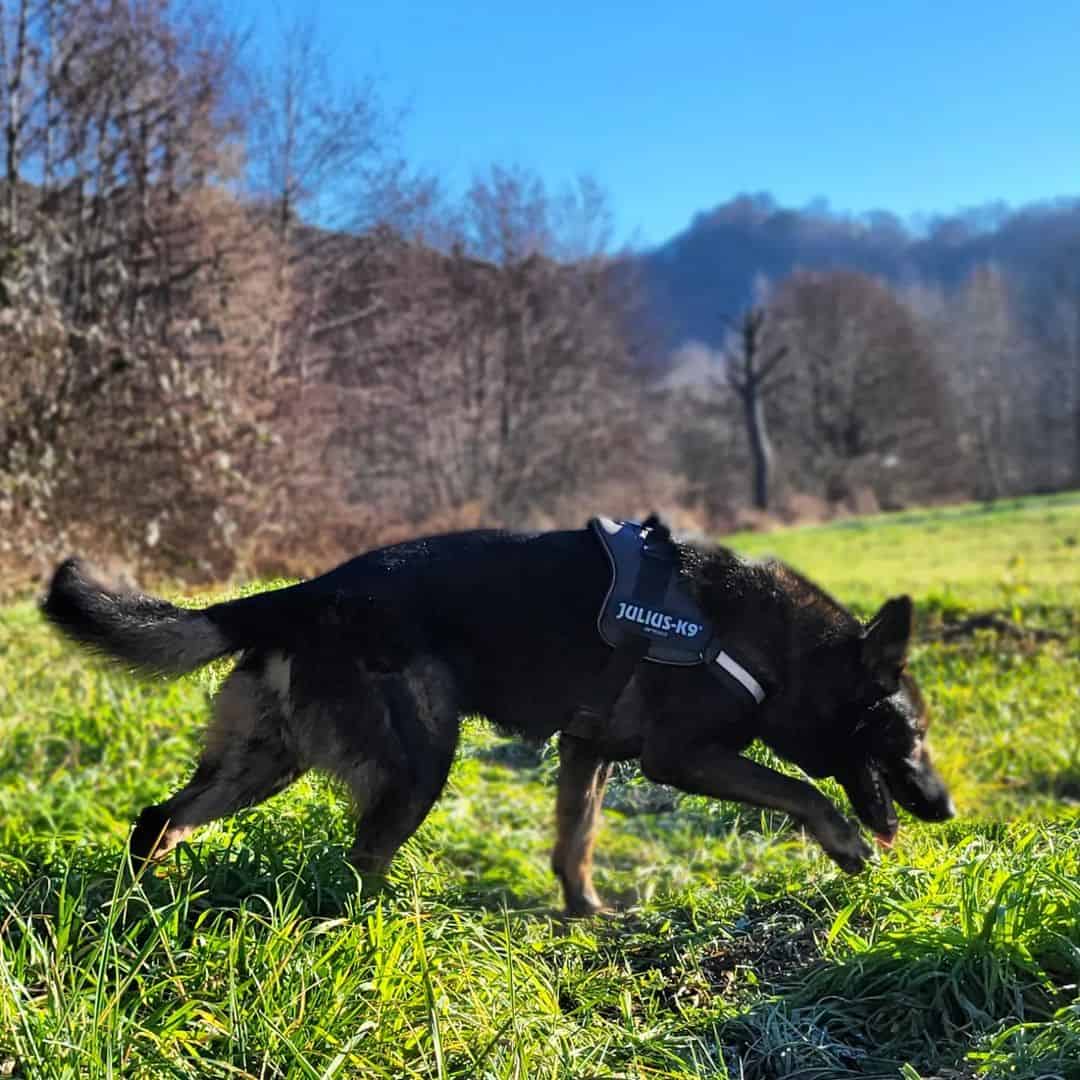
Despite the fact that they are labeled as naturally aggressive dogs, GSDs are far from being aggressive towards their family. In fact, early-socialized and obedience-trained puppies are highly unlikely to be aggressive towards other people, too.
They have the work ethics of a true professional, as well as the stamina of a true athlete. These big boys have an impeccable character that derives from their naturally high intelligence.
That being said, GSDs require firm leadership and an experienced owner who knows how to bring fun. The breed can get easily bored and frustrated, which is why new, creative ways of entertainment is the number one task of any GSD owner.
They are naturally good babysitters, service dogs, search-and-rescue dogs, and sporting companions. On the other hand, this breed is not recommended for people with an easy-going lifestyle or for people who are away a lot.
If there’s one thing we can say about GSDs with certainty, it’s that they don’t like being left out, even for one minute!
Socialization
You may think that they are hard to work with, but the truth is that grey GSDs, just like all GSDs, are among the smartest dog breeds in the world. That being said, their socialization training is not as complex as in some other dog breeds.
They may not be the most sociable dogs at the very beginning of socialization training, but they are sure fast learners and eager to please their owner. GSD owners should keep in mind that early socialization, though, is the best that they can do for their dogs.
Socializing this puppy in later stages is doable, but much more complex.
When it comes to housing and being next to other animals – socialized grey GSDs do great around other dogs, as well as around smaller pets such as cats, birds, and hamsters. In fact, they will consider them as part of their family, too.
GSDs also love small children. There were countless times when these pooches served as reliable babysitters and child protectors.
You probably heard about the well-known TikTok star, Tank, who saved a six-year-old boy from being attacked by another dog. Yup, that’s the GSD!
Aggressiveness
If you’re wondering if GSDs are aggressive, the answer is – they might be extremely aggressive! Mostly for a good purpose, though! These dogs will do anything to protect their loved ones from being attacked by an enemy or a predator.
Most of the time, their aggression derives from their protective instincts. On the other hand, some GSDs can be aggressive due to stress or anxiety. Puppies that suffered some sort of trauma are highly likely to use aggression as a self-defense mechanism.
Still, when it comes to family life – early-socialized gray German Shepherds are highly unlikely to hurt or attack anyone. Simply, their philosophy revolves around pleasing their owner, which is why the good part of their behavior is owner-induced.
Health Issues
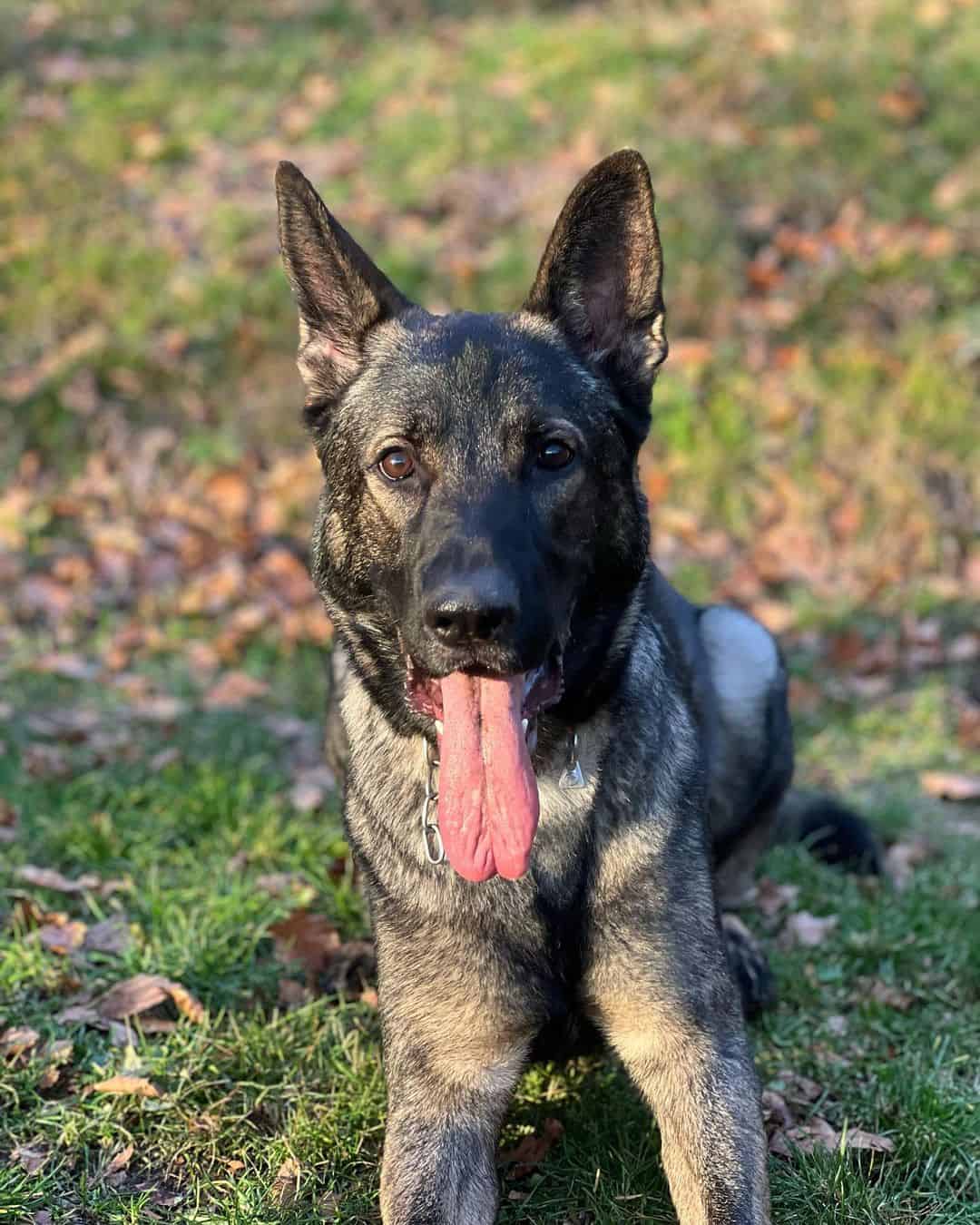
Even though all gray GSDs are considered as being respectably healthy, there are some health conditions they may deal with throughout their lifespan.
For starters, it is not uncommon for GSDs to suffer from bloat. Bloat is considered to be a condition of the stomach being filled with gas or food. Known as stomach torsion – bloat can become a deadly issue if not treated timely.
On the other hand, hip dysplasia in these pooches is quite a common health issue. It represents hip abnormality, and dogs affected with this condition walk as bunnies. Other symptoms are lack of activity; reluctance to run, jump, or climb stairs; pain in the groin; and so on.
Lastly, degenerative myelopathy is another common disease that affects GSDs. It is a progressive disease that affects puppies’ hind legs, and causes paralysis in the long term.
Final Thoughts
The grey German Shepherd, however rare and unique, has characteristics of a full-blooded German Shepherd. In fact, their grey coloring is officially recognized by the American Kennel Club, which is why these dogs are quite popular among dog lovers and breeders.
Still, in order to make a decent pet out of your grey pooch, you will need a lot of work, dedication, and commitment. If, however, you are looking for a less demanding dog breed that you want to spend countless lazy hours with – you better pass on this dog!
Read more: Isabella German Shepherd: Is This The Most Unique GSD Color?
